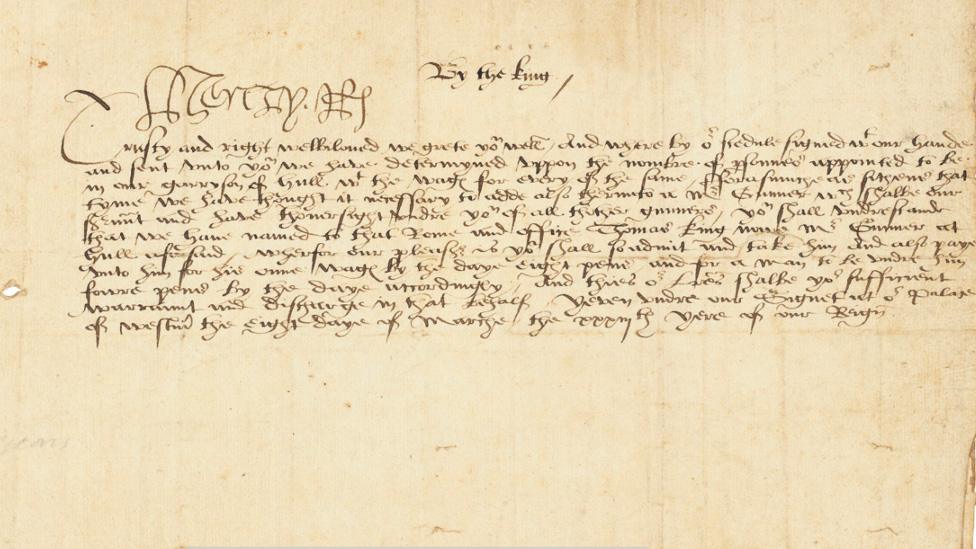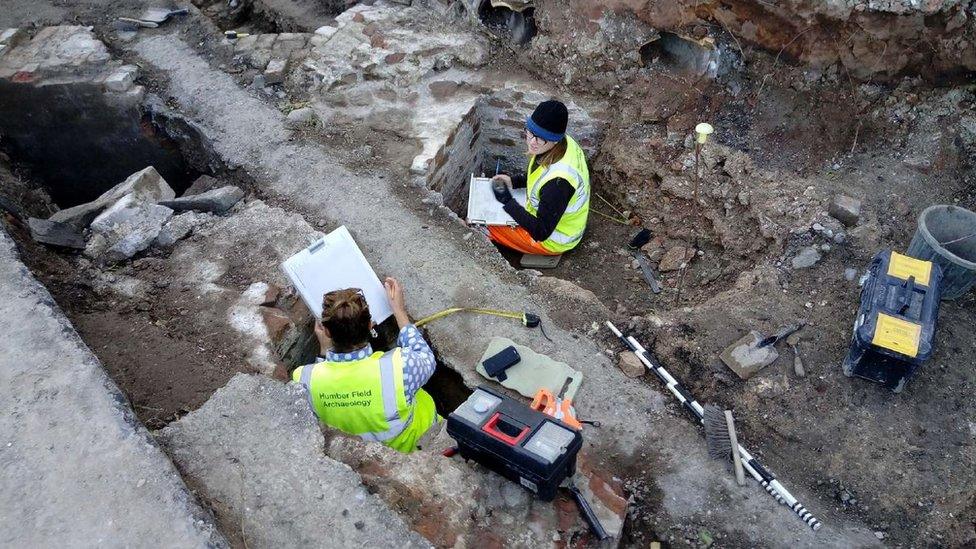Henry VIII letter to Hull's military sells for £20,000
- Published

The letter was sent to the commanders of Hull's military garrison
A letter from King Henry VIII has been sold for £20,000 at auction.
The note is signed Henry R and bears the remains of a wax seal. It is believed to date to 1541 and concerns the appointment of a new master gunner to Hull's garrison.
It was sent to Sir Richard Long and Michael Stanhope, the commanders of the city's military base.
The King asks for the gunner, Thomas King, to be paid wages of eight pence a day with four pence for his assistant.
It had an estimated price of between £8,000 and £12,000 and was sold at Christie's in central London.
Auctioneers said: "Henry visited Hull in August and September 1541 and made extensive orders for its fortification and garrisoning over the following months, perhaps in preparation for his attack on Scotland later in 1542."

A team of archaeologists excavated the walls of Henry VIII's fort in Hull
Henry VIII had ordered Hull's defences to be strengthened. A stone blockhouse was built in 1541 at a cost of more than £20,000 to house guns and to protect the gunners and ammunition from attack.
It was part of a system of three forts linked by a curtain wall protecting the city and its port.
Last year, an archaeological dig at the site uncovered the original 16th Century floor levels.
Henry VIII, one of the most famous kings in English history, reigned from 1509 to 1547 and was the second Tudor monarch.

Henry VIII split from the Roman Catholic church after he rowed with the Pope over one of his divorces
He had six wives and broke with the Pope over one of his divorces, and went on to establish the Church of England.
This led to the dissolution of the monasteries, in which the Catholic church's land and other assets were seized by the king.
Archaeologists at the Hull excavation found stones taken from destroyed monasteries which were reused in some of the walls at the fort.
- Published27 December 2017
